Posttraumatic stress disorder, which is commonly referred to as PTSD, is a mental health condition characterized by distressing emotional, cognitive, and behavioral symptoms as a result of experiencing, witnessing, or otherwise being exposed to adverse details of a traumatic event or series of events.
Understanding PTSD
Learn about PTSD
Stress and similar symptoms in the aftermath of a traumatic event are normal and to be expected. However, when symptoms persist for an extended period of time, cause particularly intense distress, or impede a person’s ability to participate in daily life, PTSD may be at the root of the problem.
PTSD is often discussed in the context of military combat, but this disorder is hardly limited to war-related experiences. Types of trauma that can lead to PTSD include, but are not limited to, child abuse, sexual abuse, emotional abuse, rape, domestic violence, severe accidents, online harassment, and natural disasters. First responders such as police officers and emergency medical technicians (EMTs) may experience PTSD due to exposure to the aftereffects of traumatic accidents or from repeatedly hearing the details of child abuse or similar crimes. In some cases, symptoms present in the immediate aftermath of the traumatic event, while in other cases it can take months or even years before the problem becomes evident.
Though PTSD can involve profoundly troubling symptoms, several types of treatment have proved to be effective at helping sufferers overcome the obstacles that have been preventing them from living happier and healthier lives.
Statistics
PTSD statistics
According to the U.S. Department of Veterans Affairs, about 8% of the U.S. population will experience PTSD at least once in their lives. The prevalence of PTSD is higher among women than men, with about 10% of women meeting diagnostic criteria for PTSD and 4% of men receiving a PTSD diagnosis. In any year, more than five million adults will be dealing with the disorder.
PTSD is more common among military members than among the general public, though the VA notes that the statistics vary depending upon the era in which an individual served. For example, the National Vietnam Veterans Readjustment Study (NVVRS) estimates that about 30% of veterans who served in the Vietnam War experienced PTSD. That number fell to about 12% among those who served in the Gulf War era. Experts estimate that as many as 20% of military members who served in Iraq and Afghanistan are suffering from the disorder.
Causes and Risk Factors
Causes and risk factors for PTSD
A great deal of research has been done to understand the reasons why some individuals are more susceptible to the development of PTSD than others. Consider the following explanations for the causes and risk factors for this mental health condition:
Genetic: Since PTSD is, by definition, a disorder that is triggered by an external event, the concept of a genetic predisposition might seem counterintuitive. However, since the majority of trauma victims do not develop PTSD, several researchers have noted potential biological factors that may contribute to the development of the disorder. For example, one expert has hypothesized that individuals whose bodies produce elevated levels of norepinephrine during trauma may suffer from an overconsolidation of memory that can lead to the development of intrusive PTSD symptoms. Other studies have explored the impact that variations within the hypothalamic-pituitary-adrenal (HPA) axis may have on increasing a person’s risk for developing PTSD in the aftermath of a traumatic experience. Also, the prior presence of a psychiatric disorder may increase the likelihood that a person will develop PTSD, a disorder which can be inherited from one’s biological parents.
Environmental: The occurrence of a traumatic event or experience is the most obvious external or environmental precursor to posttraumatic stress disorder – but it is not the only one. Having a history of exposure to multiple traumatic events – especially events that occurred during childhood is a significant risk factor for developing PTSD. The type of prior trauma can also raise one’s risk for PTSD, with assault victims having an increased risk for developing the disorder as a result of a later traumatic experience. Also, individuals who grew up in unstable family situations are more likely to develop PTSD than those whose formative years featured strong social support networks. The risk of PTSD also increases in inverse proportion to a person’s financial status and education level, though some researchers believe that this may be due to the increased likelihood that members of these socioeconomic groups will be exposed to trauma on a more regular basis.
Risk Factors:
- Personal history of prior trauma, especially during childhood
- Personal history of mental illness
- Chronically low production of cortisol
- Family history of mood or personality disorders
- Family history of substance abuse and addiction
- Gender (PTSD is more common among women than among men)
- Financial status (PTSD is more common among those with lower income)
- Marital status (being divorced or widowed increases the likelihood of PTSD)
Signs and Symptoms
Signs and symptoms of PTSD
Posttraumatic stress disorder may manifest via a wide range of symptoms. No single symptom or set of symptoms is common among all individuals who have PTSD. The following are among the more common behavioral, physical, cognitive, and psychosocial symptoms of PTSD:
Behavioral symptoms:
- Avoiding places or events that remind the person of the traumatic event
- Having strong emotional or physical reactions when encountering something that reminds the person of the traumatic event
- Keeping very busy in order to preclude thinking or talking about the traumatic event
- Engaging in reckless and/or self-destructive behaviors
- Being easily frightened or startled
Physical symptoms:
- Sleep problems
- Unexplained physical pain (headaches, stomachaches, and other somatic complaints)
- Hyperarousal – feeling jittery or otherwise “keyed up”
Cognitive symptoms:
- Trouble staying focused on tasks at hand
- Flashbacks – mentally re-experiencing the trauma
- Nightmares that involve or are related to the traumatic event
- Memory problems
Psychosocial symptoms:
- Feelings of panic, anxiety, and/or irritability
- Shame and/or guilt
- Emotional numbness
- Self-hatred
- Anger and other forms of aggressiveness
- Fear and/or a sense of impending doom
Effects
Effects of PTSD
As suggested by the lists of symptoms in the previous section, PTSD can have a significant negative impact on virtually all aspects of a person’s life, from thoughts and emotions to decisions and actions. The following are among the more common effects of PTSD:
- Thoughts of suicide
- Suicide attempts
- Exhaustion
- Strained or destroyed personal relationships
- Abuse of alcohol and other drugs
- Risky, dangerous, or otherwise desperate behaviors
- Sense of hopelessness, guilt, and self-hatred
Co-Occurring Disorders
PTSD and co-occurring disorders
People who struggle with PTSD have an increased likelihood of experiencing a number of other disorders, including the following:
- Substance use disorders
- Depressive disorders
- Bipolar disorder
- Anxiety disorders



